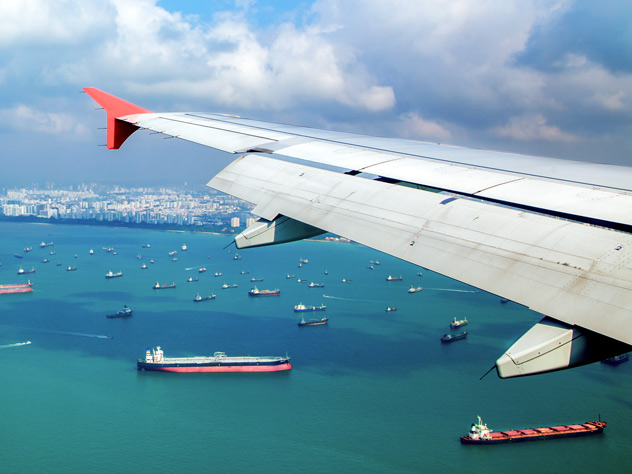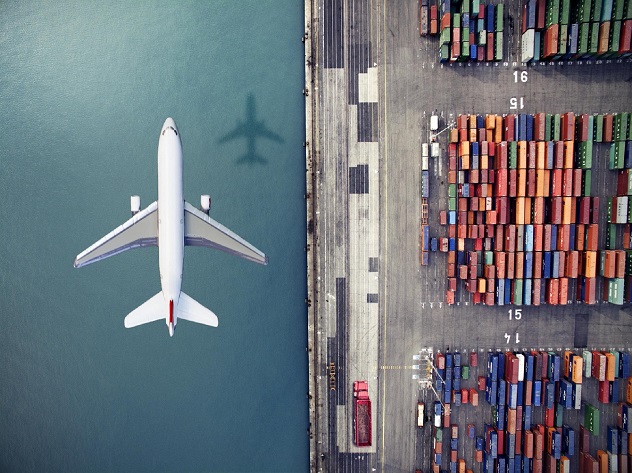Over the past couple of years, we’ve learnt that the future is unpredictable and things can change in the blink of an eye. Between the rapid spread of coronavirus last year and the more recent Suez Canal blockage, businesses across the globe are re-examining their logistics processes to allow room for greater flexibility. As a result, contingency planning is rapidly gaining prominence. Let’s find out how smart planning can prevent unexpected issues from slowing you down.
Shifting from ‘just-in-time’ to ‘just-in-case’
Until a few years ago, “just-in-time” was the most important marker of an optimised supply chain – businesses wished to ship their products at a low cost and in a timely fashion. Slowly but surely, the importance of “just-in-case” logistics is growing.
The shift in focus to ‘just-in-case’ involves diversifying your supply chain operations by combining and using different modes of transport, routes, ports, and sourcing locations. With proactive, ahead-of-time planning and a wide variety of options to choose from, you can simply switch to the alternate solution that will meet your needs in case of emergencies.
Take multimodal transport, for example. It provides reliable transportation on routes that are relatively unaffected by disruption. At Kuehne+Nagel, we’ve implemented alternate modes of transport for our customers via Sea-Air. Check out how we helped one of them switch to a different route successfully during the height of the pandemic last year.
Rolling with the punches
Customer awareness and flexibility is indispensable to contingency planning. While logistics providers can give you advise and guidance, you have to be open to trying out non-standardised solutions should the need arise. No one can predict disruptive events like strikes, accidents, downturn of business, etc. However, a willingness to take chances during these times can differentiate you from competition.
Enhancing visibility and control
Having end-to-end visibility over your shipments is crucial for your supply chain. Advanced digital tools like myKN provide you access to up-to-date information and allow you to monitor your goods at all times. This transparency ensures that you can spot potential challenges and respond swiftly. With the click of a button, you can locate where your shipments are and how they’re affected. It helps you make informed, data-driven decisions, even in stressful circumstances.
Making room for clear communication
The importance of communication is often diluted in conversations about contingency planning. However, a clear communication flow helps promote transparency for all the stakeholders in your supply chain. It helps transition roles and responsibilities smoothly during a disruption. With a communication strategy in place, you can reach out to different partners in the supply chain quickly.
An example of our swift response to the Suez Canal blockage
The recent Suez Canal crisis is a great example of how an unexpected accident can adversely affect supply chain operations across the globe. From a distance, it might seem like businesses would have had a delay of 6 days – the duration of the blockage. However, the entire crisis has caused a ripple effect - affecting the shipping schedules of container vessels for months.
To best prepare our customer for the impact from the crisis, Kuehne+Nagel’s Sea-Air Product team worked relentlessly to repair their supply chain. As a first step, we quickly rerouted some of their shipments which were already on the way to Suez Canal. After changing their port of destination, we received the container at the transshipment port, and expedited their shipments by using air freight to finish the rest of the journey. This helped our customer reach the market earlier than they had planned, despite the challenges presented by the blockage.
Businesses today – more than ever before – are aware of the many uncontrollable factors that govern their supply chains. While the future remains unpredictable, at Kuehne+Nagel we ensure that there is a plan B (or even C) in place and develop scalable solutions that can help our customers tackle uncertainties with ease and confidence.


.jpeg/7134e809-a8c9-fe16-3d63-636050ea8b75)





